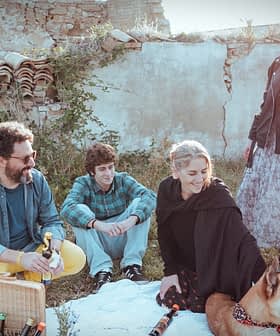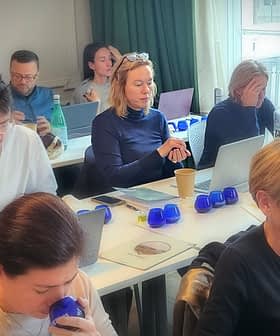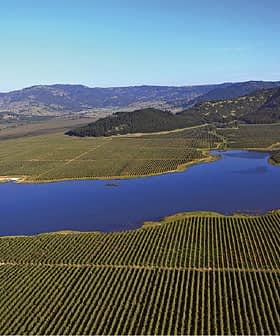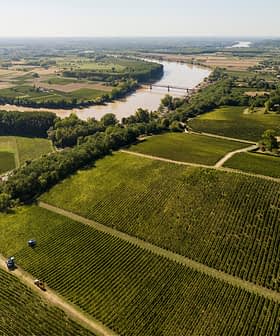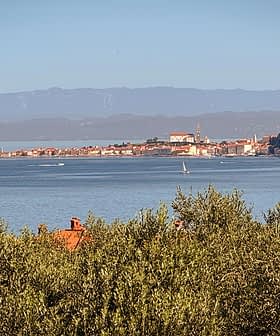Meet the Montenegrin Producer Who Once Charmed a Royal Couple

Olive growers in Montenegro, particularly in Plantaže near Podgorica and Ulcinj, are expecting a good harvest with healthy fruits. Fatmir Sadik, a well-known olive grower, sells his Olcinium brand olive oil, which has attracted international attention and accolades, and he is working to expand production and preserve the tradition of Montenegrin olive growing despite the challenges of climate change.
Olive growers on the Montenegrin coast and farther inland in Plantaže, near Podgorica, the capital, expect a good harvest.
“The crop is solid. The fruits are healthy,” said Fatmir Sadik from Ulcinj, one of the region’s most well-known olive growers.
The best advertisement for Montenegrin olive growing is our tradition.
Sadik sells his oil under the Olcinium brand, which loosely translates to “place of oil.” Olcinium is also the historical name for Ulcinj, which has a long olive-growing tradition.
“Since the 2nd century, during the Roman Empire, the main economic drivers here have been shipping and olive growing,” Sadik said. “People worked at sea for six months and in the olive groves for the other six.”
See Also:One Year After a Devastating Fire in Montenegro, Farmers Continue to RebuildAll of this is evidenced by the olive trees, the oldest of which in Mirovica near Bar is 2,247 years old. Furthermore, 120,000 of the 190,000 olive trees in Ulcinj are between 200 and 2,000 years old.
Most of them are in the scenic Valdanos Bay, where Sadik has 700 trees in two groves, mainly of the native Žutica variety.
“My oldest is 1,150 years old,” he said. The combination of age and quality has presented Sadik with opportunities to gift his oils to foreign dignitaries, including King Charles III and Camilla, the Queen Consort, who visited Montenegro in 2016.
In the historic town of Cetinje, local producers prepared an exhibition of traditional Montenegrin food for the royal couple. Among them are two extra virgin olive oils, one made from the olives of the millenary tree in Mirovica and the other from Sadik’s groves in Valdanos Bay.
“It was an event to remember,” Sadik said of the then Prince of Wales’s visit to his stand. Although protocol did not call for it, he added that Charles extended his hand and congratulated him after they tasted the oil.
Sadik took the opportunity and presented the royal couple with two bottles of olive oil from his oldest tree packed in a box that he made from olive wood.
Camilla later declared that she had never tasted better olive oil, which was reported by many international media outlets. The headline appeared on the front page of the most-read Montenegrin news magazine: “Duchess Camilla was delighted by Montenegrin oil.”
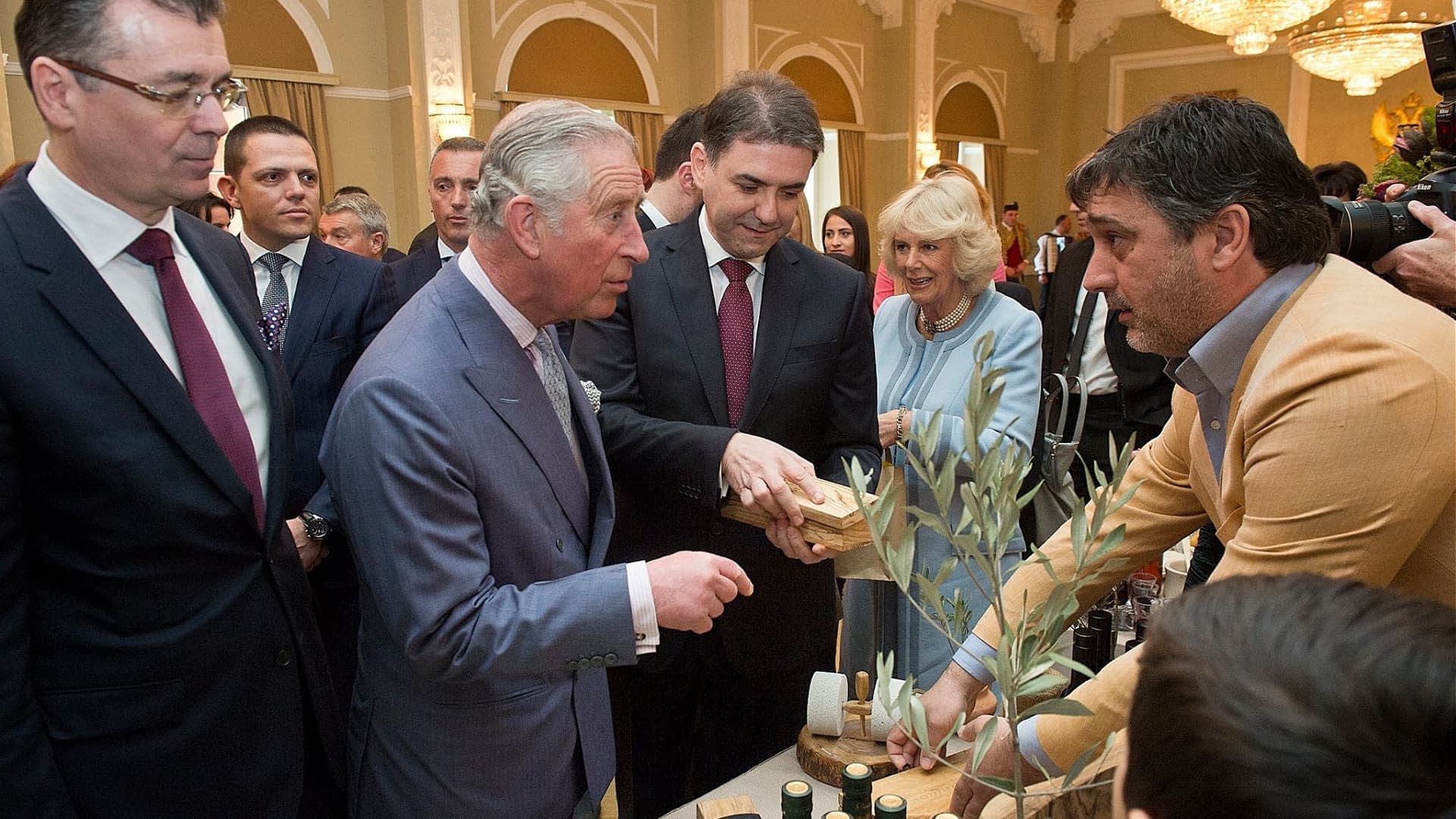
Prince Charles tasted the oil and congratulated Fatmir in 2016
The exhibitors also received a handwritten thank you note from the royal couple. In the note, Sadik said the couple praised the olive oil they received as a gift.
He has also sold his olive oils packaged in handcrafted boxes to a prince of the United Arab Emirates, who owns a local port, and other foreign dignitaries visiting their respective embassies in the capital.
“The best advertisement for Montenegrin olive growing is our tradition,” Sadik said. “Another advantage is that, unlike most other olive-growing countries, we did not use chemical protective agents in cultivation.”
“We have the conditions for producing top-quality oils, which would achieve high prices with suitable packages,” he added.
Sadik respects tradition on his farm but also uses the latest technologies and best practices while harvesting, transforming, storing, packaging and marketing his olive oil.
“In the last 10 years, other olive growers have accepted the new, but there are still those who work in the old way,” he said. “They are late with the harvest. They wait for the fruits to fall to the ground by themselves. They ferment so that the oils from such olives have no healthy properties. Producing oils from such olives is the same as making juice from rotten apples.”
Sadik plans to start this year’s harvest on October 1, with the help of family and friends. Although, he will also hire seasonal workers for the job.
All his olive trees are harvested by hand and with shakers. They start early in the morning and end no later than 1:00 PM. By then, temperatures often exceed 20 ºC, and Sadik’s goal is to avoid oxidation.
The harvested olives are collected in nets and placed into crates. They are then transported by vehicle and immediately transformed into the family mill, the first of its kind in Ulcinj. The state-of-the-art mill, known as Oliomio, has a capacity of 250 kilograms of olives per hour.
Transformation occurs in two stages using a centrifuge at a maximum temperature of 27 ºC. Compost and water go to one compartment, and oil to the other.
Sadik said this process guarantees high-quality oil if the olives are picked at the right time and milled on the same day.
“From the moment of harvesting to transformation, no more than four hours should pass,” he said. “Otherwise, oxidation and the increase of free fatty acids occur, and the oil begins losing quality.”
From this year’s harvest of 700 olive trees, Sadik expects 2.5 to 3 tons of extra virgin olive oil. According to the International Olive Council, Montenegro produces about 500 tons of olive oil each year.
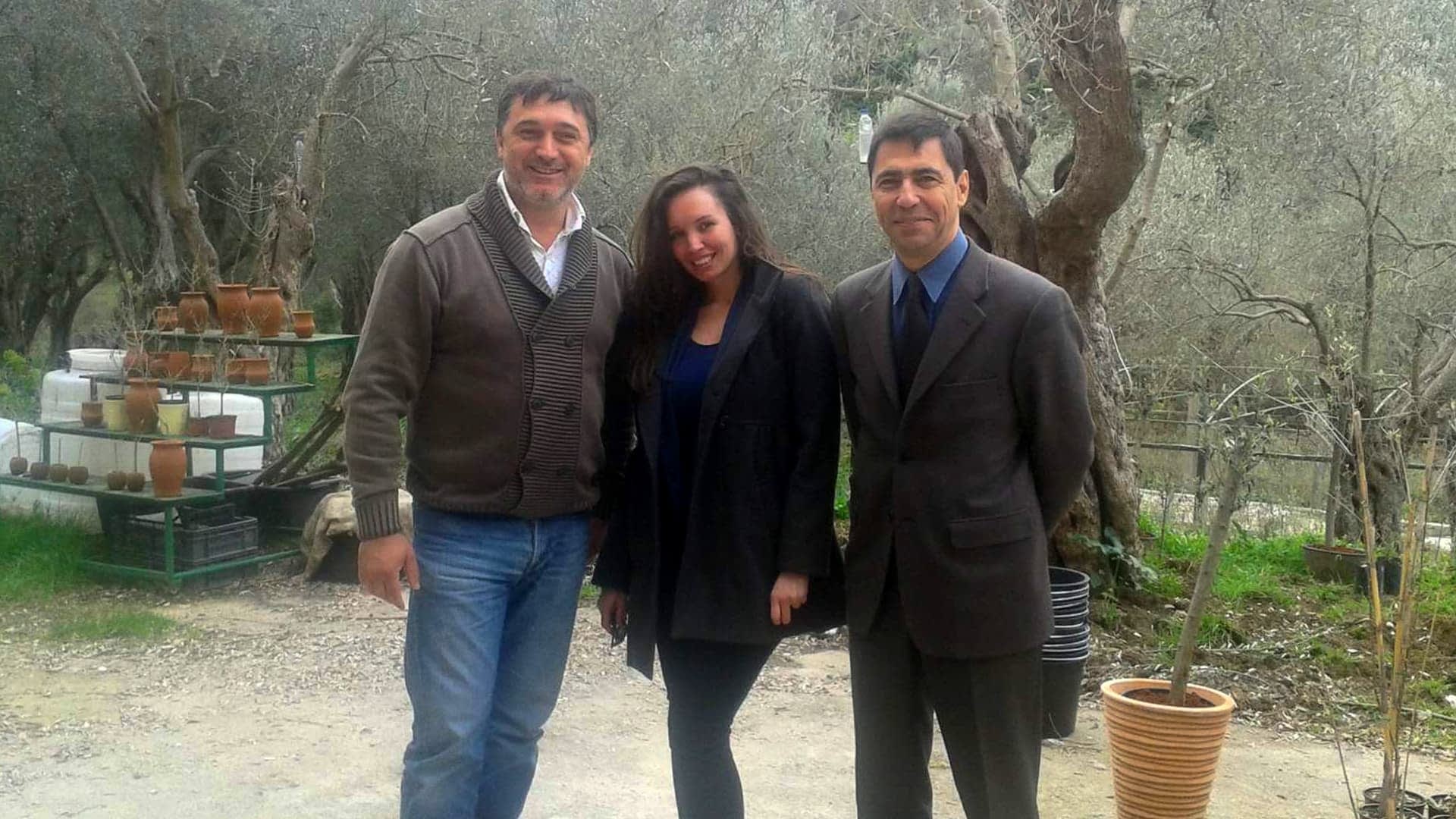
Former International Olive Council executive director Jean-Louis Barjol (right) visiting the farm
Sadik also buys olives from other growers, but on the condition that he determines the time and method of harvesting. “I don’t accept worms and those picked up from the ground,” he said.
In addition to timely harvesting and processing, he said it is crucial that the olive oil is stored in suitable containers made of dark glass or stainless steel, without contact with oxygen and light, at a temperature of 14 ºC to 18 ºC.
His Olcinium extra virgin olive oil has been awarded multiple times at national and international competitions. With oil from this year’s harvest, he intends to send samples to the 2023 NYIOOC World Olive Oil Competition, the world’s largest olive oil quality competition.
“It’s a big challenge for me,” Sadik said. “If my oil wins an award there, among the best in the world, it will be the best confirmation of quality. A dream come true.”
In addition to producing olive oil, Sadik also tried his hand at seedling production. With partners from Albania and Greece, he produced 5,000 Žutica seedlings in the first year and 10,000 in the second and third years.
However, he gave up on this effort as Montenegrin growers overwhelmingly opted to plant Italian varieties such as Leccino and Pendolino and Spanish varieties such as Arbequina.
“Everyone wants a crop overnight, and time will tell whether domestic or foreign varieties are better for Montenegrin conditions,” he said.
Sadik continued to work with olive wood, though, crafting boxes, bowls, souvenirs and other objects for everyday use.
“Just like the fruit, the olive tree is unique,” he said. After all, Michelangelo said that an olive tree is a work of art in itself.
Sadik was encouraged to start working with olive wood by an elderly couple from Vodnjan, Croatia, who made objects from olive wood.
On his return to Montenegro, he also began to shape the olive tree, eventually achieving a desirable skill.
“It is both my love and my job,” he said. Sadik also hired carpenters who worked according to his ideas.
Together with a well-known European artist, Sadik will make bottles from terracotta and porcelain, which is processed at a temperature of 1,400 ºC. Those bottles will contain a limited series of oil from his oldest olives and will be sold at very high prices. Sadik is convinced that he will succeed this time as well.
“Olive growers from Montenegro are not competitive in terms of quantity,” he said. “But we can export our oils from autochthonous olives, provided they are of the highest quality, in original packages through tourism at prices higher than those achieved in classic exports.”
The main challenge facing Montenegrin producers, according to Sadik, is climate change. “We cannot influence climate change, but we can adapt to it,” he said.
Despite the challenges a warmer and drier climate will have on Montenegro, Sadik believes that Montenegro can plant 1 million olive trees in the coming years, triple the current amount in the country. Many of these trees will be planted around his groves in Ulcinj.



